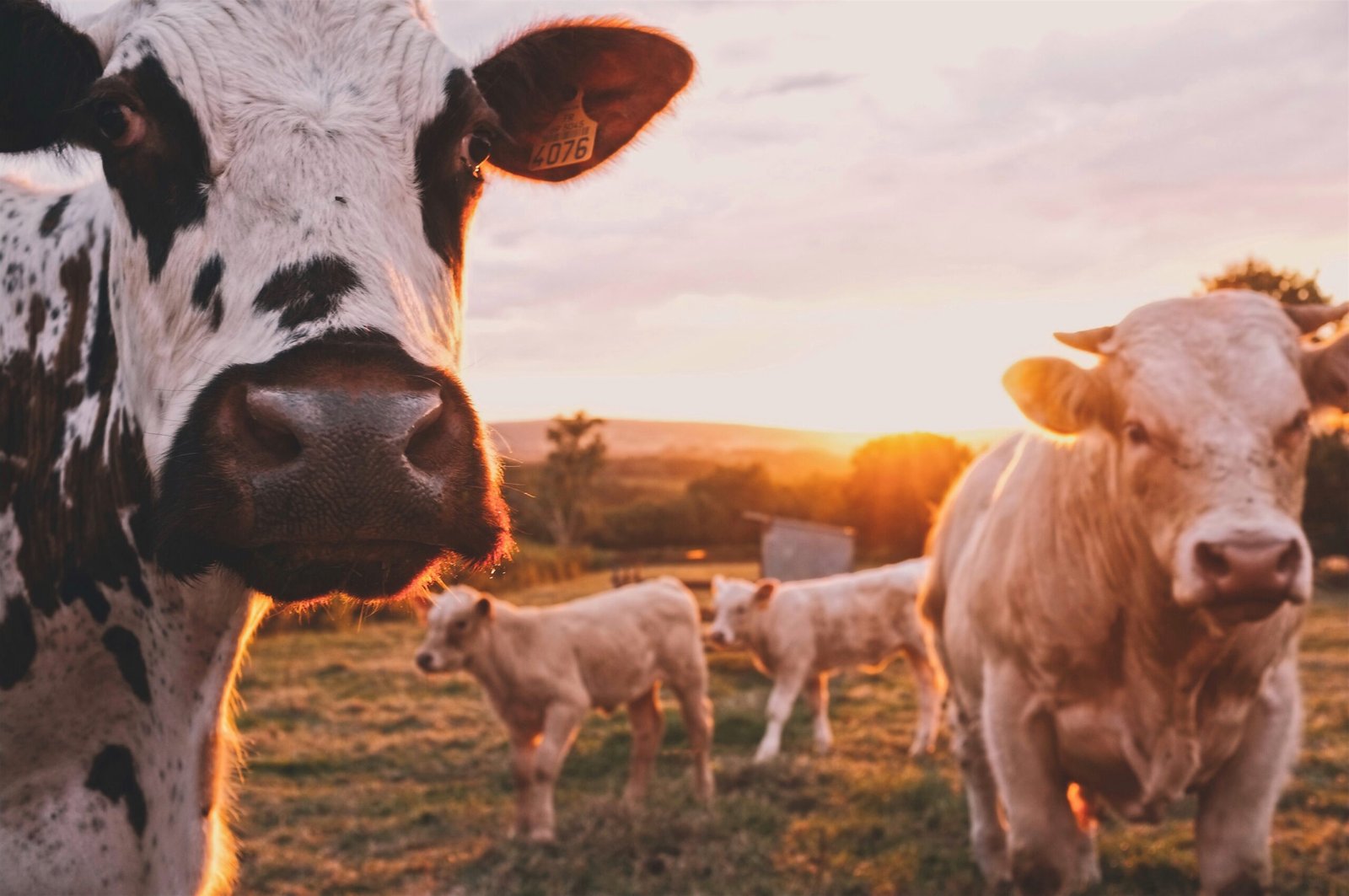Have you ever wondered about the connection between dairy and oxalates? It turns out that oxalates, which are naturally occurring substances found in many plant foods, can bind to calcium and form calcium oxalate, leading to the formation of kidney stones. This article explores the relationship between dairy consumption and oxalate levels, discussing whether dairy products can contribute to the development of kidney stones or actually help prevent them. So, if you’ve ever been curious about how dairy fits into the oxalate puzzle, keep reading to find out more.

The Role of Dairy in the Diet
Overview of dairy products
Dairy products have long been a staple in many diets around the world. From milk to cheese to yogurt, dairy offers a wide range of options for incorporating into your daily meals. These products are derived from the milk of mammals, typically cows, although other animals like goats and sheep can also be sources of dairy. They are classified as a food group due to their unique nutritional composition and contribution to overall health.
Nutritional value of dairy products
Dairy products are packed with essential nutrients that are vital for the proper functioning of the body. They are an excellent source of calcium, which is crucial for maintaining strong bones and teeth. Additionally, dairy products provide high-quality protein, which is essential for growth and repair of tissues. They also contain vitamins such as vitamin D, vitamin B12, and riboflavin, along with minerals like potassium and phosphorus. These nutrients work together to support various bodily functions and promote overall wellbeing.
Understanding Oxalates
What are oxalates?
Oxalates are naturally occurring compounds found in a wide range of foods, both plant-based and animal-based. They are produced by plants as a defense mechanism against herbivores and pests. Oxalates can also be formed as byproducts of metabolism in the human body. Ingested oxalates can bind with calcium in the intestines, leading to the formation of calcium oxalate crystals. These crystals can then accumulate and form kidney stones, a painful condition that affects millions of people worldwide.
Sources of oxalates
Oxalates are present in various foods, including fruits, vegetables, nuts, and grains. Some of the high-oxalate foods include spinach, rhubarb, beet greens, soy products, almonds, and chocolate. It is important to note that not all oxalate-containing foods need to be avoided, as many of them provide numerous health benefits. However, individuals who are prone to developing kidney stones may need to monitor their oxalate intake to prevent stone formation.
Potential Health Benefits of Dairy Consumption
Promotes bone health
One of the primary benefits of dairy consumption is its role in promoting bone health. Dairy products are rich in calcium, a mineral that is essential for the development and maintenance of strong bones and teeth. Adequate calcium intake during childhood and adolescence helps to build peak bone mass, which is crucial for reducing the risk of osteoporosis later in life. Including dairy products in your diet can help ensure that you are getting the necessary calcium to support optimal bone health.
Provides essential nutrients
In addition to calcium, dairy products are also rich in other essential nutrients that are important for overall health and wellbeing. These include high-quality protein, which is essential for muscle growth and repair, as well as vitamins such as vitamin D, vitamin B12, and riboflavin. Vitamin D plays a vital role in calcium absorption and bone health, while vitamin B12 is necessary for proper nerve function and the formation of red blood cells. By incorporating dairy into your diet, you can obtain a wide array of essential nutrients that may otherwise be challenging to obtain from other food sources.
Oxalates and Kidney Stones
Link between high oxalate intake and kidney stones
There is a known link between high oxalate intake and the formation of kidney stones. When oxalates bind with calcium in the intestine, they form calcium oxalate crystals, which have the potential to accumulate and cause the formation of kidney stones. Individuals who have a history of kidney stones or are at increased risk of developing them may be advised to limit their oxalate intake to prevent stone formation. It is important to note that factors such as inadequate fluid intake, certain medical conditions, and genetic predisposition also play a role in kidney stone formation.
Role of calcium in reducing oxalate absorption
Interestingly, calcium plays a paradoxical role in reducing oxalate absorption. Consuming calcium alongside high-oxalate foods can help prevent the binding of oxalates in the intestine, reducing the risk of oxalate absorption and subsequent crystal formation. This means that consuming dairy products, which are high in calcium, may actually counteract the potential negative effects of oxalates and contribute to overall kidney stone prevention. However, it is essential to strike a balance between calcium and oxalate intake to ensure optimal kidney health.

Dairy Consumption and Oxalate Absorption
Effect of dairy on oxalate absorption
Several studies have investigated the relationship between dairy consumption and oxalate absorption. Research suggests that consuming dairy products alongside oxalate-rich foods can decrease oxalate absorption in the intestines. It is believed that the calcium in dairy forms insoluble calcium oxalate complexes, preventing the oxalate from being absorbed into the bloodstream. This, in turn, reduces the likelihood of oxalate crystals forming and contributing to kidney stone formation.
Calcium’s role in binding oxalates
Calcium has the ability to bind with oxalates, forming insoluble complexes that are excreted in the stool. This binding ensures that the oxalates are not absorbed into the bloodstream, reducing their potential to form calcium oxalate crystals. The presence of calcium also helps to maintain a stable urinary pH, which further inhibits crystal formation. It is important to note that increasing calcium intake through dairy consumption should be done in conjunction with a balanced diet and under the guidance of a healthcare professional.
Lactose Intolerance and Oxalate Consumption
Lactose intolerance and dairy consumption
Lactose intolerance is a common digestive disorder where individuals have difficulty digesting lactose, the sugar found in milk and dairy products. While lactose intolerance does not directly affect oxalate consumption, it can impact dairy intake due to the symptoms it produces, such as bloating, diarrhea, and abdominal pain. Those with lactose intolerance may need to limit their dairy consumption or seek alternative dairy options to ensure they still receive the essential nutrients dairy provides without experiencing uncomfortable symptoms.
Alternative dairy options for those with lactose intolerance
For individuals with lactose intolerance, there are various alternative dairy options available. These alternatives are typically made from non-dairy sources like soy, almond, rice, or coconut. They mimic the taste and texture of traditional dairy products and can be used as substitutes in recipes and beverages. Many alternative dairy products are fortified with calcium and other essential nutrients to ensure they offer similar nutritional benefits to traditional dairy. It is important to check labels carefully and choose products that are fortified and meet your dietary needs.

The Dairy-Oxalate Paradox
Dairy’s calcium content vs. its potential oxalate contribution
Dairy products contain both calcium and oxalates, which may initially seem contradictory when considering their impact on kidney stone formation. However, the calcium content in dairy plays a vital role in reducing the absorption of oxalates and subsequently preventing the formation of kidney stones. While dairy products do contain oxalates, the net effect of consuming dairy is still thought to be beneficial due to the binding of oxalates by calcium and the overall nutrient density of these products.
Net effect of dairy consumption on oxalate levels
When considering the net effect of dairy consumption on oxalate levels, research suggests that the impact is likely to be favorable. Although dairy does contribute to oxalate intake, the calcium content in dairy can offset this by reducing oxalate absorption and promoting the excretion of insoluble oxalate complexes. It is important to note that individual responses may vary, and it is advisable to consult with a healthcare professional to determine the most appropriate dietary approach based on individual health concerns and needs.
Individual Variations in Oxalate Metabolism
Genetic factors influencing oxalate metabolism
Individuals may have genetic variations that influence their ability to metabolize oxalates. These genetic factors can affect oxalate transport and metabolism, potentially increasing the risk of oxalate-related conditions such as kidney stone formation. Understanding one’s genetic predisposition to oxalate metabolism can help guide dietary choices and personalized approaches to managing oxalate intake.
Effect of gut microbiota on oxalate handling
The gut microbiota, the community of microorganisms residing in the intestinal tract, also plays a role in oxalate handling. Certain bacteria in the gut can break down oxalates, while others can promote their absorption. Imbalances in the gut microbiota may affect oxalate metabolism, potentially impacting the risk of kidney stone formation. Further research is needed to fully understand the intricate relationship between gut microbiota and oxalate handling.
Balancing Dairy and Oxalate Intake
Factors to consider when balancing dairy and oxalate consumption
When aiming to strike a balance between dairy and oxalate intake, individual factors should be considered. This includes personal health history, dietary preferences, kidney health, genetic predispositions, and any related medical conditions. Consulting a healthcare professional or registered dietitian can provide guidance on determining an appropriate balance based on individual needs and goals.
Tips for managing oxalate intake
For individuals who need to manage oxalate intake, there are several strategies that can be implemented. These include spreading out oxalate-rich foods throughout the day rather than consuming them all at once, pairing high-oxalate foods with calcium-rich foods or dairy products to minimize absorption, and cooking certain foods to reduce oxalate content. Increasing fluid intake and maintaining a healthy, balanced diet with a variety of foods can also help manage oxalate absorption and reduce the risk of stone formation.
Conclusion
In conclusion, the relationship between dairy consumption and oxalate intake is complex, with various factors influencing the overall impact on kidney stone formation. Dairy products provide essential nutrients and promote bone health, making them an important part of a well-rounded diet. While dairy contains oxalates, its calcium content can counteract their potential effects by reducing oxalate absorption. It is crucial to consider individual factors, such as genetic variations, gut microbiota, and medical history, when determining the appropriate balance between dairy and oxalate consumption. By making informed dietary choices and working with healthcare professionals, individuals can optimize their diet to support overall health and wellbeing.

